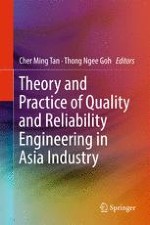2017 | OriginalPaper | Chapter
The Evaluation of Service Quality for Higher Education in Taiwan by Using Importance-Satisfaction Model
Authors : Kuo-Chun Tsai, PoTsang B. Huang, Ching-Chow Yang
Published in: Theory and Practice of Quality and Reliability Engineering in Asia Industry
Publisher: Springer Singapore
Activate our intelligent search to find suitable subject content or patents.
Select sections of text to find matching patents with Artificial Intelligence. powered by
Select sections of text to find additional relevant content using AI-assisted search. powered by
